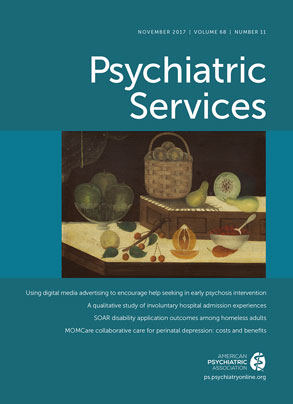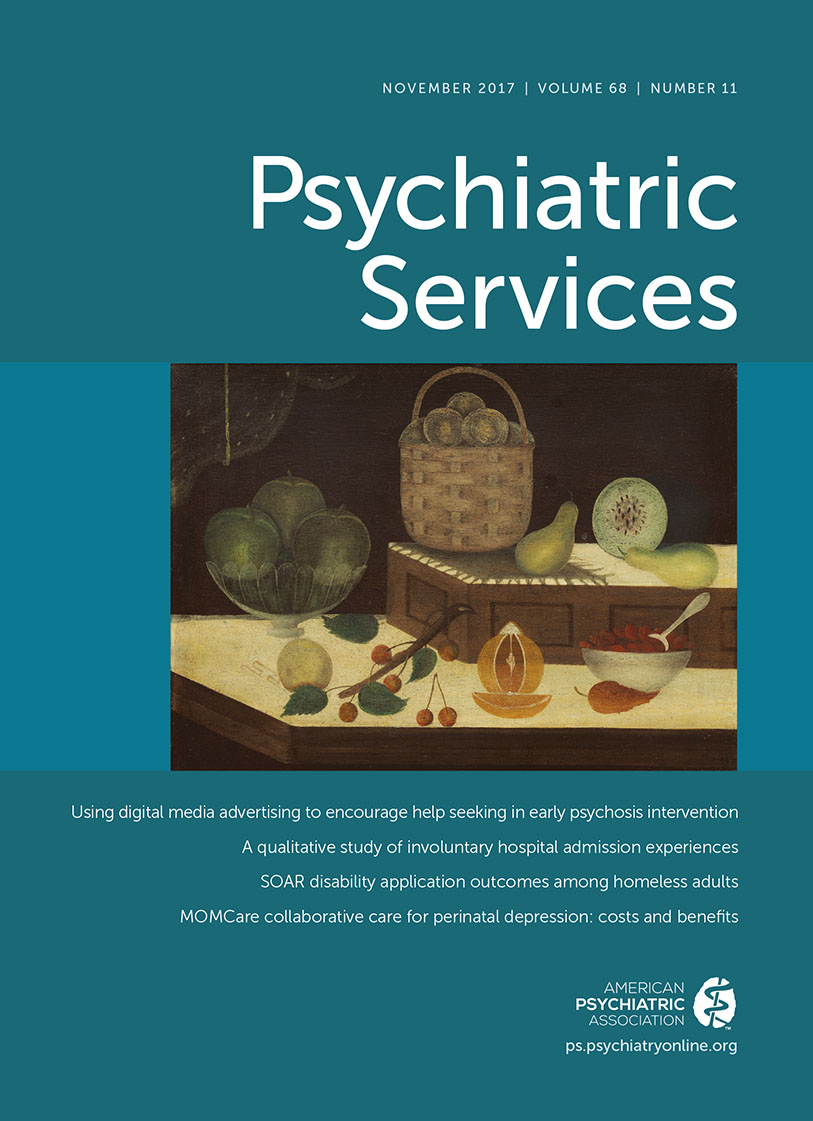The U.S. Department of State’s mental health services, first established in 1979, grew out of an organizational response to terrorist attacks in the 1970s, most saliently the tragic 1979 assassination of Ambassador Adolph Dubs in Kabul, Afghanistan, as well as the 1979–1981 Iran hostage crisis (
1). The department responded by deploying its first regional medical officer–psychiatrist (RMOP) to Embassy Kabul and developing the foundation for a growing mental health program in Washington, D.C., embedded within its Office of Medical Services. RMOPs from this program played a crucial role in the planning, medical evaluation, and repatriation of the 52 U.S. diplomats held hostage by the Iranian government from 1979 until 1981.
The Office of Medical Services and its mental health services program continued to perform mission-critical functions in similar responses to other large-scale terrorist attacks against U.S. diplomatic facilities during the 1980s. Throughout the 1980s and 1990s, the program doubled in size, and RMOPs were posted to western hemisphere countries and to Africa, Europe, the Middle East, and Asia, with each RMOP bearing responsibility for mental health support to a given geographic region. Partnering closely with their colocated primary care colleagues and utilizing best practices and consensus-guided principles, RMOPs continued to play key roles in the U.S. government’s diplomatic, medical, and behavioral health response to terror attacks, natural disasters, and other crises affecting the overseas U.S. diplomatic community.
RMOPs and the Current Program
RMOPs come from a variety of professional backgrounds, including private practice, academia, the military, public health systems, and other federal services. All providers must be board certified, and many have additional subspecialty board certifications, as well as Ph.D., M.B.A., and M.P.H. degrees. Many are multilingual, and all candidates hold an official diplomatic title overseas as permanent Foreign Service specialists for the U.S. Department of State. In addition, all receive training in comprehensive advanced life support; management consultation; mass casualty and disaster response; aeromedical evacuation (
2); management of suspicions of child abuse and neglect and domestic violence; and medical-psychiatric-psychological support of U.S. diplomatic hostages, victims of terrorism and personal violence, and missing persons.
Although all patient care is subject to privacy and confidentiality requirements, RMOPs have a unique “dual-agency” role, which can incur potential ethical conflicts, in that they also serve the needs of the U.S. Department of State and its larger diplomatic, national security mission (each RMOP possesses a top secret security clearance). In addition, they live overseas and work among their diplomatic colleagues (who may at times become their patients) within insular, diplomatic communities and compounds, which presents potential boundary concerns and ethical challenges more often observed in small, rural communities (
3). In Washington, D.C., a large complement of civil service social workers, psychiatrists, psychologists, and administrative staff work to support the department’s overseas embassy medical units and partner closely with RMOPs in support and delivery of collaborative care overseas.
Outcomes
Whereas the initial focus and growth of the Department of State’s mental health program entailed its response to disasters, terror attacks, and crises, it became evident early in the program’s development that embedding RMOPs overseas with primary care clinicians might offer better mental health outcomes, given low rates of medical evacuation (approximately 3%−4% of all patients seen by RMOPs) and repatriation (about 2% of all patients seen by RMOPs) (
4). Core principles of integrated care, such as accountability, have great relevance for organizational health, because targeted treatment to remission and attendant optimal workplace functioning are critical to the State Department’s long-term investment in its diplomatic employees.
The largest subsequent programmatic growth in the mental health program followed the 1998 East Africa terror attacks and the attacks of 9/11 (
5). Since then, the overseas U.S. government diplomatic footprint (encompassing more than 50 different federal agencies) has grown to over 60,000 covered persons (including family members). The State Department’s mental health program now encompasses more than 250 U.S. embassies and consulates worldwide. In addition to the above-noted mental health response to disasters and crises, the State Department recognized that expanding its diplomatic presence overseas required a more robust general medical and psychiatric footprint. This recognition, combined with improved local mental health resources overseas, mobile technologies, and telemedicine resources, has led to a sustained demand for mental health services by U.S. overseas diplomatic personnel and their family members.
The past decade has seen the expansion of other strategically important, subspecialized integrated mental health programs supporting U.S. diplomatic dependents with childhood mental illnesses and special-education needs. They provide behavioral health, child psychiatric-psychological, financial, and psychoeducational support to more than 1,500 overseas U.S. diplomatic dependents annually. Among overseas diplomatic employees, utilization of RMOP services may involve informal, “curbside” consultations with both patients and their primary care clinicians for common problems, such as stress reactions, sleep disturbances, circadian rhythm disturbances, jet lag, loss of resilience in a “high operational-tempo” setting, vicarious traumatization, and vigilance fatigue.
Another significant RMOP role involves consultation to senior overseas diplomatic leadership regarding morale, unit cohesion, population mental health challenges (for example, terror attacks, natural disasters, pandemics, crime, pollution, and social isolation), and sensitive personnel matters affecting the overall U.S diplomatic mission and its functioning in complex environments, such as war-zone diplomatic postings and large, politically important, diplomatically sensitive postings (
6). Thus, RMOPs occupy a “hybrid” space in terms of models of care delivery, located in large embassy health units that function as de facto patient-centered medical homes, such as in London, Nairobi, Moscow, Mexico City, Bogota, New Delhi, Bangkok, Beijing, Tokyo, and Frankfurt. But many of these larger embassies also function as critical, strategic platforms with respect to U.S. government diplomacy, thereby placing RMOPs at key loci with respect to their crisis response and management consultation functions.
Preliminary, unpublished data since 1991 show a rate of use of outpatient psychiatric services (embassy and/or consulate health unit only) of 5.6%, compared with a rate of 8.8% in comparable U.S. settings. Additional unpublished data (limited to comparing two overseas RMOP regions) suggest that nearly half of U.S. diplomatic (including employees and family members) patients receive a V code or diagnosis of an adjustment disorder. Other diagnoses commonly seen include depression, anxiety, and childhood disorders. The rate of psychiatric evacuations (to the United States) for definitive evaluation and treatment has remained fairly consistent over the past several decades, with recent preliminary data from 2008–2010 showing a rate of .2 per 1,000, or approximately 3.6% of patients seen by RMOPs; this number represents approximately 8%−9% of all medical evacuations worldwide of U.S. diplomatic personnel, including family members. Further analysis of these data during 2008–2010 has shown that 70% of the medical evacuations involved patients with mood disorders; alcohol use disorders; parent, child or partner relational problems; or adjustment disorders. Psychoses, mania, and organic brain disorders are rare in this medically screened population. Posttraumatic stress disorder (PTSD) is uncommon (compared with rates in the U.S. military and the general population), with an incidence of less than 2%, and these data are similar to published data from the British Foreign Office (
7). In addition, in nearly 75% of U.S. diplomatic psychiatric evacuations involving PTSD, the person has a history of prior trauma exposure, most often related to previous military service. Finally, internal, unpublished data indicate a very low number of completed suicides in the U.S. Department of State. In a 2012 internal study, one completed suicide was noted in a population of approximately 57,000 U.S. diplomats and family members stationed overseas. In subsequent years, one to three suicides per year were reported in a similar cohort. These numbers are obviously far below rates in U.S. civilian or military populations.
Discussion
The data summarized here beg the question of whether the above-noted outcomes are attributable solely to the provision of high-capacity mental health support (with a ratio of one RMOP per 3,000 “covered lives”) to an older, more educated, relatively healthy, prescreened, medically cleared, volunteer population (
8). Data from management psychology and corporate risk management literature indicate that rates of curtailment of overseas assignments vary from 20% to 80% in demographically similar populations. A key difference is that corporate organizations (as well as diplomatic services from other countries) tend to rely solely on local medical care, compared with the U.S. Department of State, which utilizes a globally networked, integrated behavioral health program. Only retrospective or long-term, prospective controlled studies—which are expensive and difficult to conduct in such mobile populations, with results from different populations of travelers that are difficult to compare—can answer these outcome-related, comparison-based, epidemiologic questions.
It may be tempting to infer that some of the outcomes described above are attributable to the Department of State’s integrated care approach. Combined with increased use of telemedicine resources, mobile platforms (such as smartphone apps for insomnia, stress management, and psychotherapy) (
9), and psychoeducation in topics such as resilience, wellness, cognitive style, childhood mental health, and stress management, integrated behavioral health approaches (
10) have become the coin of the realm in the overseas U.S. government diplomatic medical program. The future holds much promise as telemedicine, technologies such as wearables, clinical decision support tools, and self-care modules become increasingly common in such decentralized, geographically dispersed, and networked clinical environments.
Conclusions
As a unique, singular, and historic diplomatic mental health program, the U.S. Department of State’s mental health program has pioneered an integrated approach since its inception in the late 1970s. Building from its roots in disaster and crisis response, it has grown to encompass a broader clinical response to the general medical and behavioral health needs of an expanding U.S. diplomatic presence in increasingly challenging, stressful, and dangerous environments. The current model might yet evolve, especially in conjunction with the use of telemedicine, mobile technologies, and other technical service delivery platforms (including self-care and clinical decision support tools). The current model fosters greater reliance on social workers, psychologists, nurse practitioners, and physician assistants, with psychiatrists remaining in leadership and consultation roles. The Department of State’s mental health program represents a natural laboratory in the field of travel medicine as an integrated care model for other similar, capitated, bundled-payment organizational models in regionally distributed and geographically dispersed settings.

